
Ah, the poor zucchini.
This humble cucurbit ends up being the joke of many a gardener each summer. With comparisons to baseball bats and billy clubs, its reputation for producing monster squash is well known. Then there is its propensity for producing non-stop once it gets going, leaving us with the annual question of what the heck to do with all that zucchini.
There’s always zucchini bread or zucchini boats laced with cheese and stuffed with sausage. While these are great, you can only eat so many zucchini boats a week. Especially when you know while you’re eating your little fleet, your plant is out in the garden growing you an entire navy.
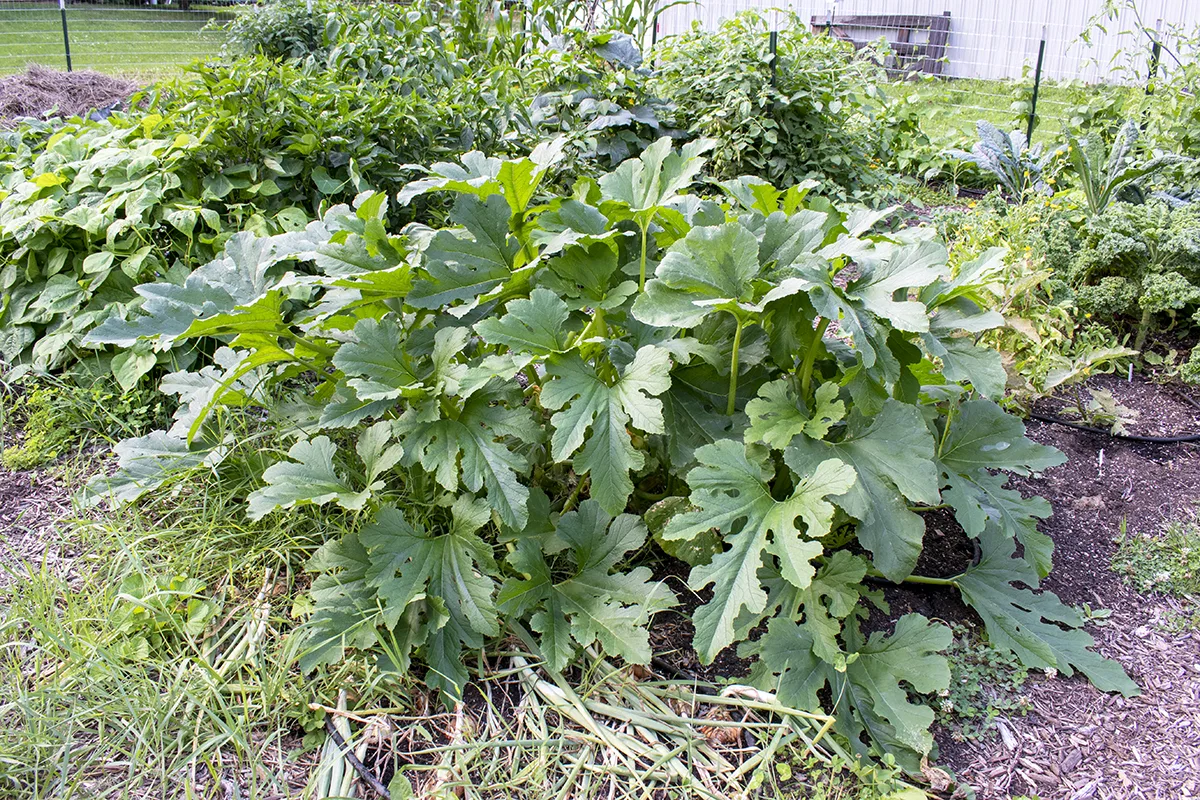
Why not freeze it?
After all, you can freeze all kinds of things from your garden – onions, potatoes, even butternut squash.
Some of you are smirking. I remember the first time I froze summer squash. I dutifully cubed it, blanched it and froze it. Then I got to enjoy thawed zucchini mush with my dinner. Mmmm. It was more like soup than the tender squash we ate all summer.
Since that first failed attempt, I have stumbled onto my favorite way to freeze zucchini, and it doesn’t require you to blanch it first.
I may have mentioned several hundred times that I’m always looking for the easiest (i/e laziest) method of doing things in my kitchen. And this is it.
I grate my zucchini and flash freeze it before popping it in a freezer bag.
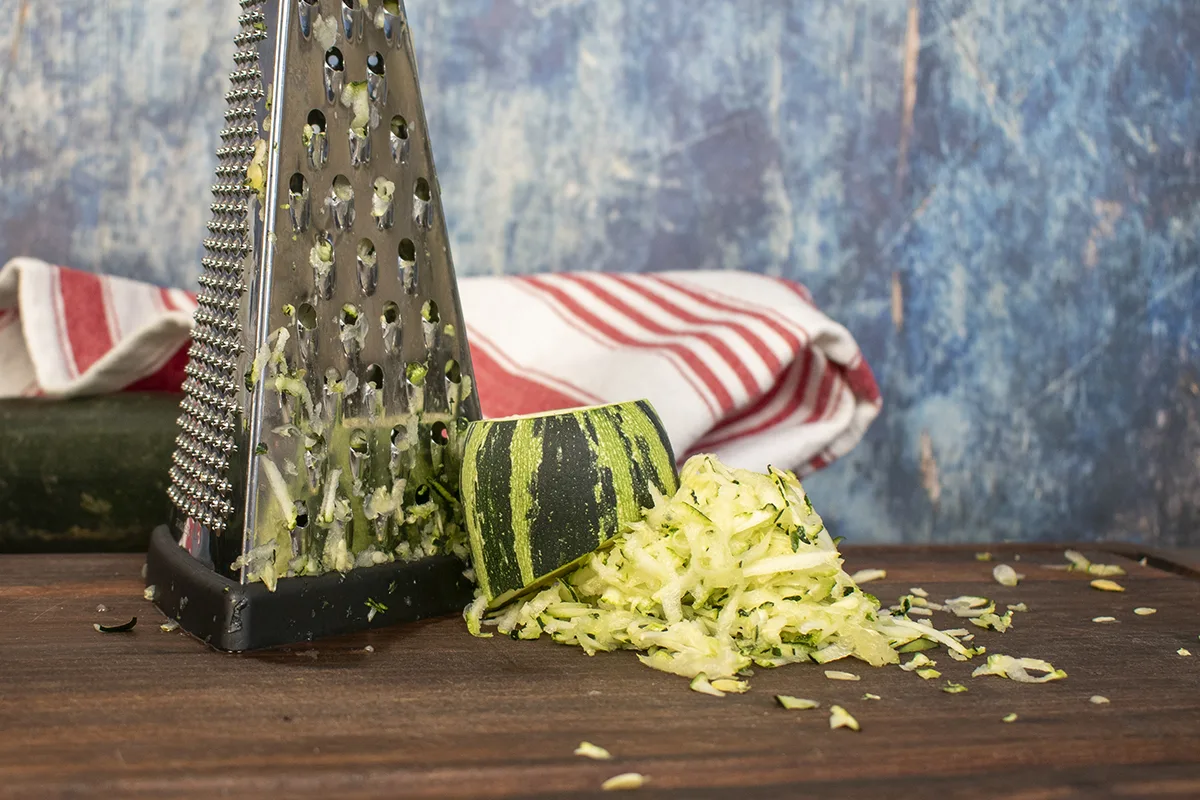
This leaves me with perfectly portioned, easy-to-grab zucchini whenever I need it – no blanching necessary.
I often get asked why blanching is necessary and why frozen veggies are so mushy when thawed. So, let’s answer those questions before we jump into the details of freezing zukes.
Why Do We Need to Blanch Vegetables Before Freezing Them Anyway?
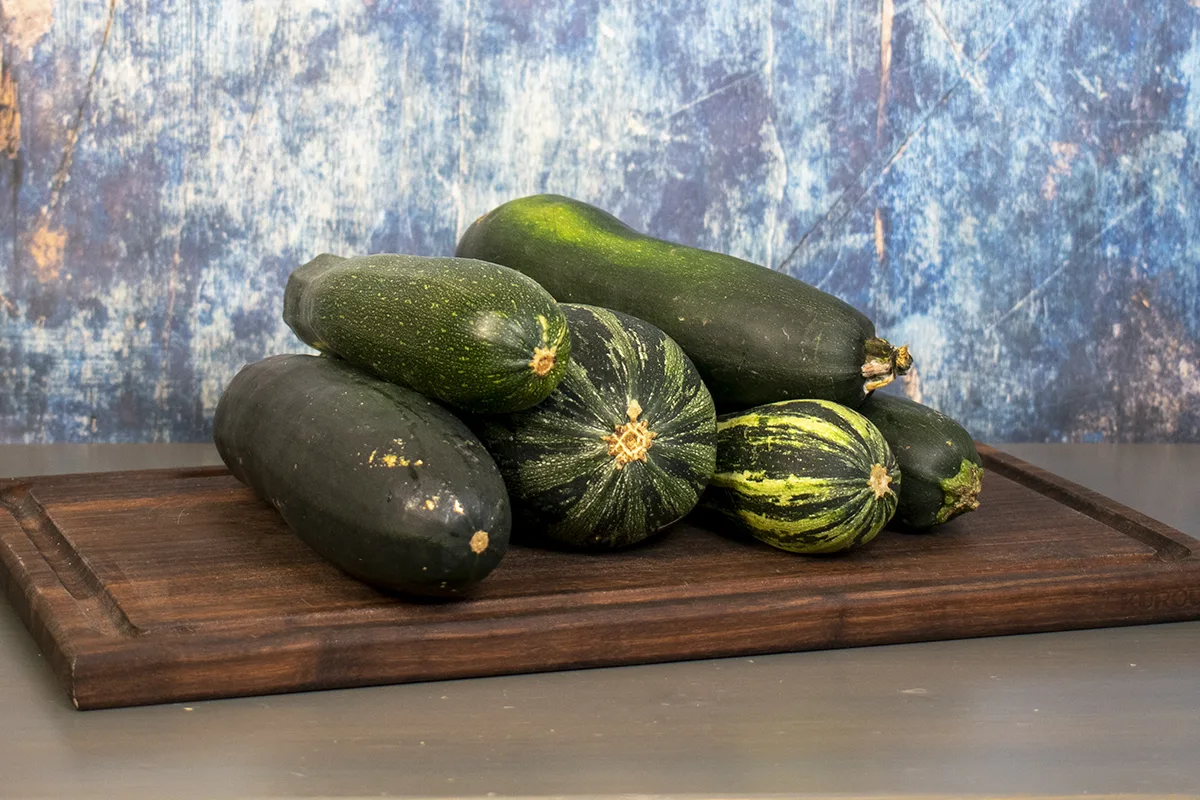
Enzymes, that’s why.
Blanching vegetables slows or stops the enzymes responsible for food spoilage. If you don’t blanch vegetables before freezing them, those enzymes will still be at work (albeit slowly), and in the end, you get food that has lost its vibrant color and may even develop spots. Unblanched veggies can have weird off-flavors, too, leaving you with food that’s wholly unappealing.
Nutrients are lost or broken down by these same enzymes. Blanching is a way to preserve the nutrients in our food. A few minutes in boiling water can lock in nutrients that would otherwise be lost in the freezer over time.
The process is usually quick but does add an extra step that involves a lot of work in the kitchen.
After blanching, you need to stop the cooking process; to do that, you have to dunk your blanched veggies in an ice bath. After a few batches, this can get messy and time-consuming, not to mention you need a decent supply of ice on hand.
A Bit About Ice Crystals
Regardless of your method, frozen vegetables and fruits will always be softer (sometimes even mushy) than when you froze them. This softer texture comes from ice crystals that form when the vegetables are frozen.
We all know that water expands as it freezes. This is because the hydrogen bonds in water expand as they freeze, creating more volume.
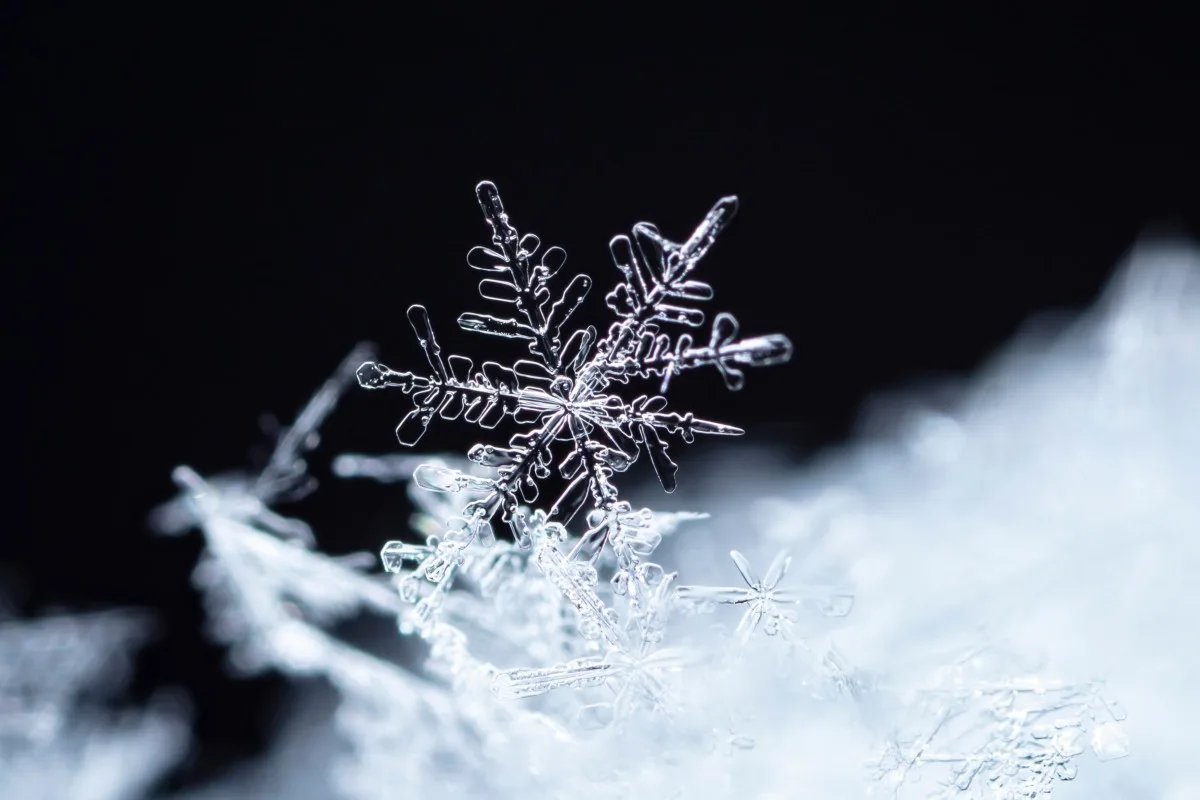
Anyone who has closely looked at snowflakes also knows that water freezes in six-sided crystals. Naturally, these solid structures take up more room than a liquid, which forms to the shape of its container.
Well, what happens when that container is, say, a plant cell?
As water freezes inside vegetables, the microscopic ice crystals pierce the cell walls of the plant. While your zucchini is frozen, all is well; it remains a rock-hard piece of cubed zucchini. However, once you thaw that little zucchini cube and the ice crystals become liquid again, the cell walls lose their structural integrity.
You try standing up straight after being riddled with holes made by icicles.
Once you take into account that zucchini is about 90% water, it’s easy to understand why it’s so mushy once it has thawed.
But Tracey, when I buy store-bought frozen vegetables, they’re never as mushy as the ones I freeze at home.
Ah-ha, that’s a good point, and there’s an easy explanation for that too.
The faster water freezes, the smaller the resulting ice crystals. When we freeze vegetables in our home, the process can take several hours, resulting in larger crystals. Whereas with commercially flash-frozen vegetables, it takes minutes. Liquid nitrogen is employed to freeze things almost instantly.
All of this is to say, no matter what method you employ, when you freeze vegetables or fruits, they will always be softer when thawed.
With the science out of the way, let’s freeze some zucchini.
No-Blanch Frozen Zucchini
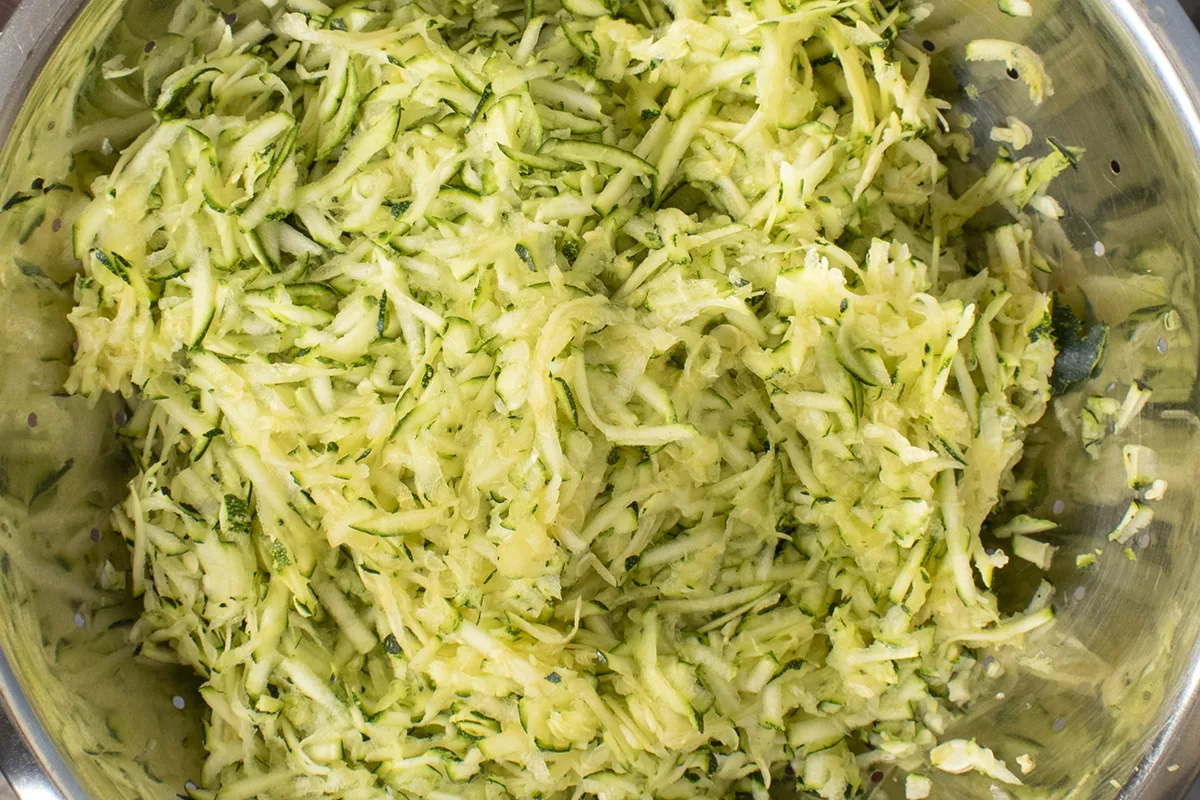
I discovered this trick more by accident than anything else. During my first few attempts at freezing batches of unblanched zucchini, I noticed when it thawed; the shredded zucchini held up pretty well compared to the slices and cubes I made.
I’m happy to forego slices of tender summer squash in the winter for zucchini better suited for bread, pasta, soups, stir-fries and fritters. So, I’ve been freezing my zucchini this way ever since.
Equipment:
- Food processor, mandolin slicer or box grater
- Colander
- Baking sheet
- Parchment Paper
- One cup measuring cup
- Freezer bag
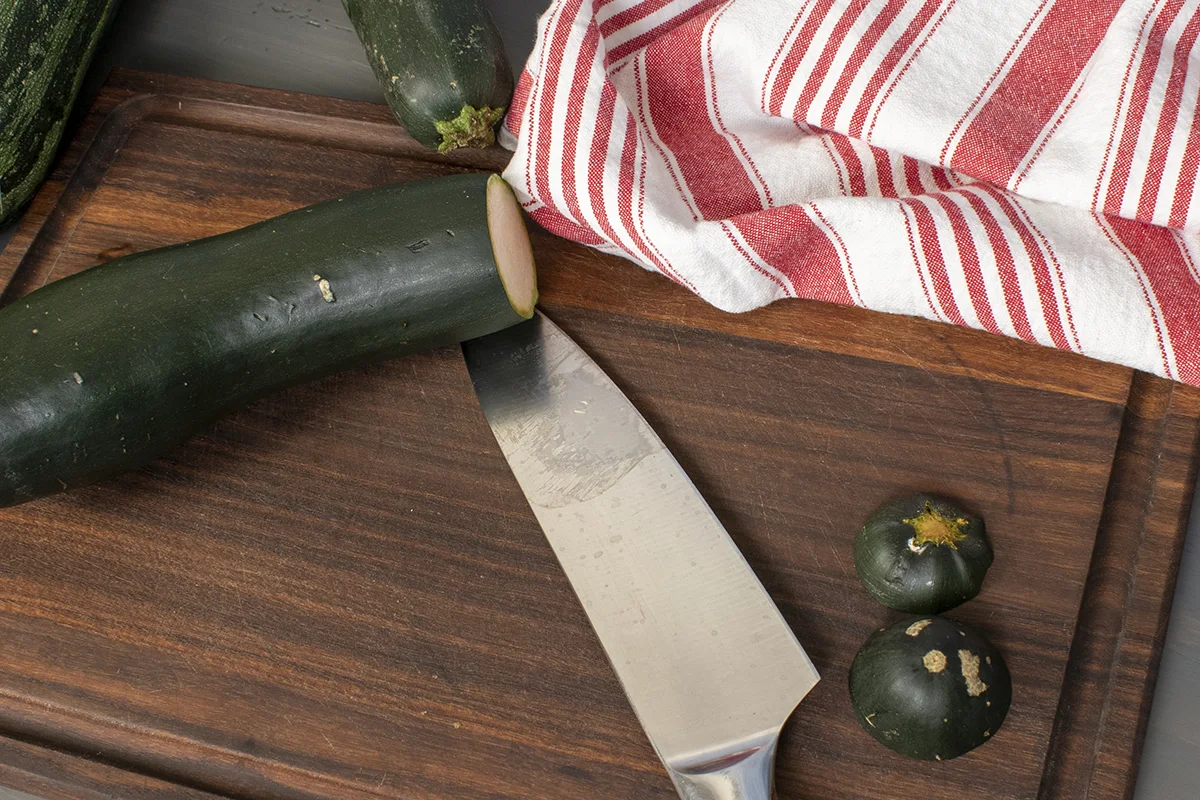
The Process:
- Gather up your zucchini. Work quickly; while you’re freezing it, your plant will be out in the garden growing a dozen more.
- Slice off the top and bottom of the squash.
- Use a food processor or mandolin slicer to grate your zucchini. If you want a killer core workout, grate your zucchini with a box grater. Since you worked off all the zucchini bread you’re about to eat; you can have an extra slice.
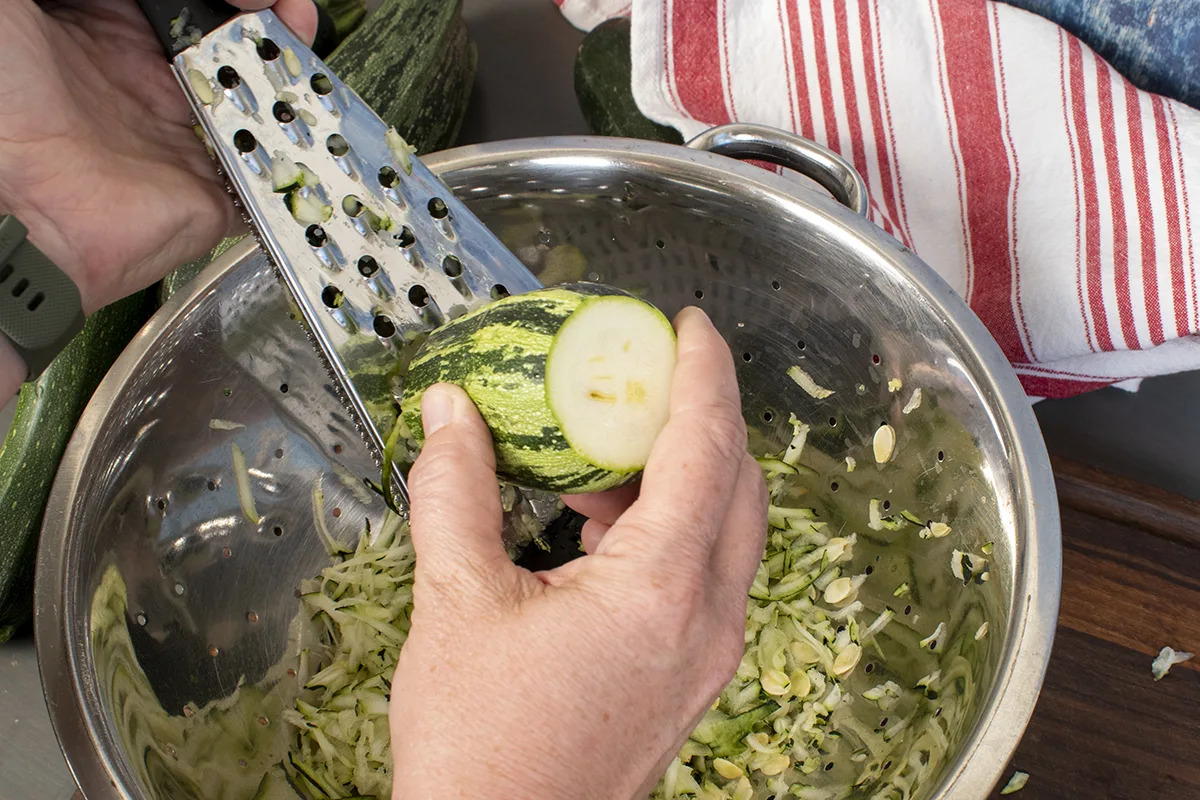
- Place the grated zucchini in the colander in the sink. As you add more, gently press it down and squeeze it a little to remove extra water.
- Using the one-cup measuring cup, pack it with shredded zucchini. Now plop it out on the parchment paper-lined baking sheet.
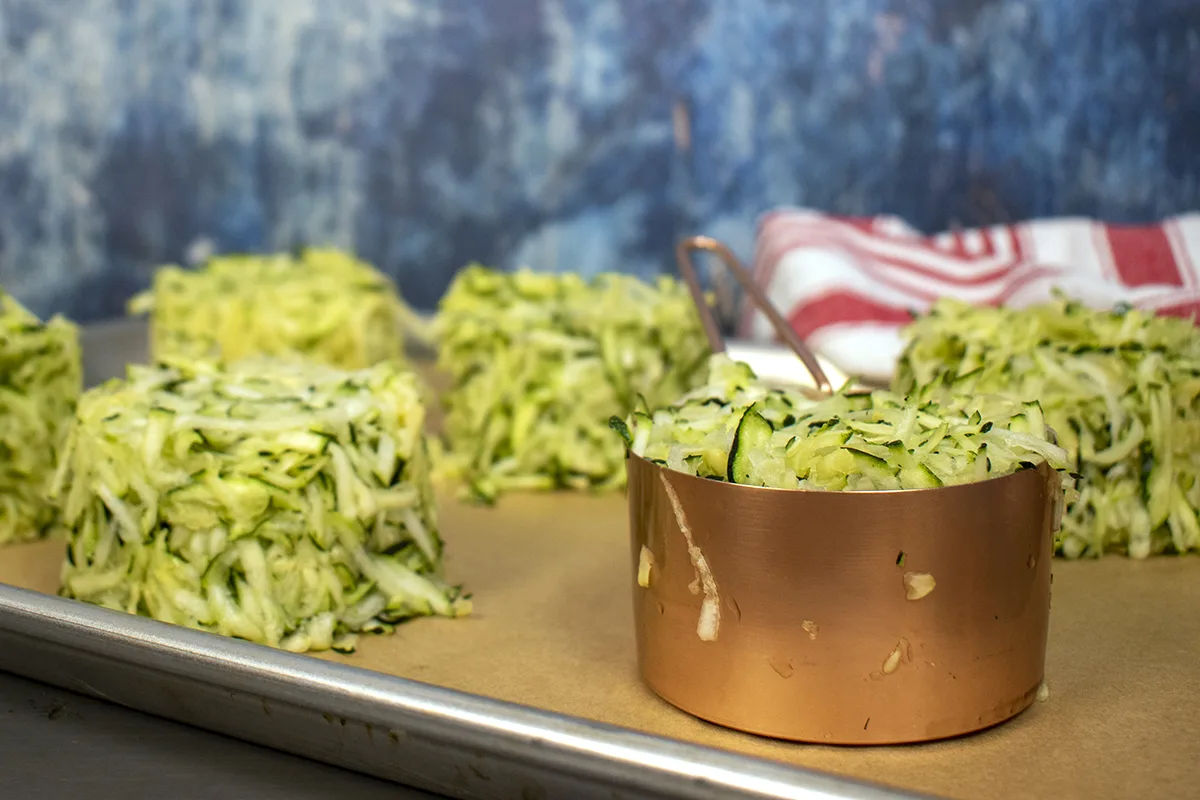
- Repeat until the sheet is covered with zucchini hay stacks and put it in the freezer.
- Once your zucchini stacks are frozen solid, take them off the baking sheet and put them together in one freezer bag.
- Use a straw to suck out as much air as possible from the bag before sealing it and popping it back in the freezer.
Voila! Now you have pre-measured one-cup portions of zucchini whenever you need it.
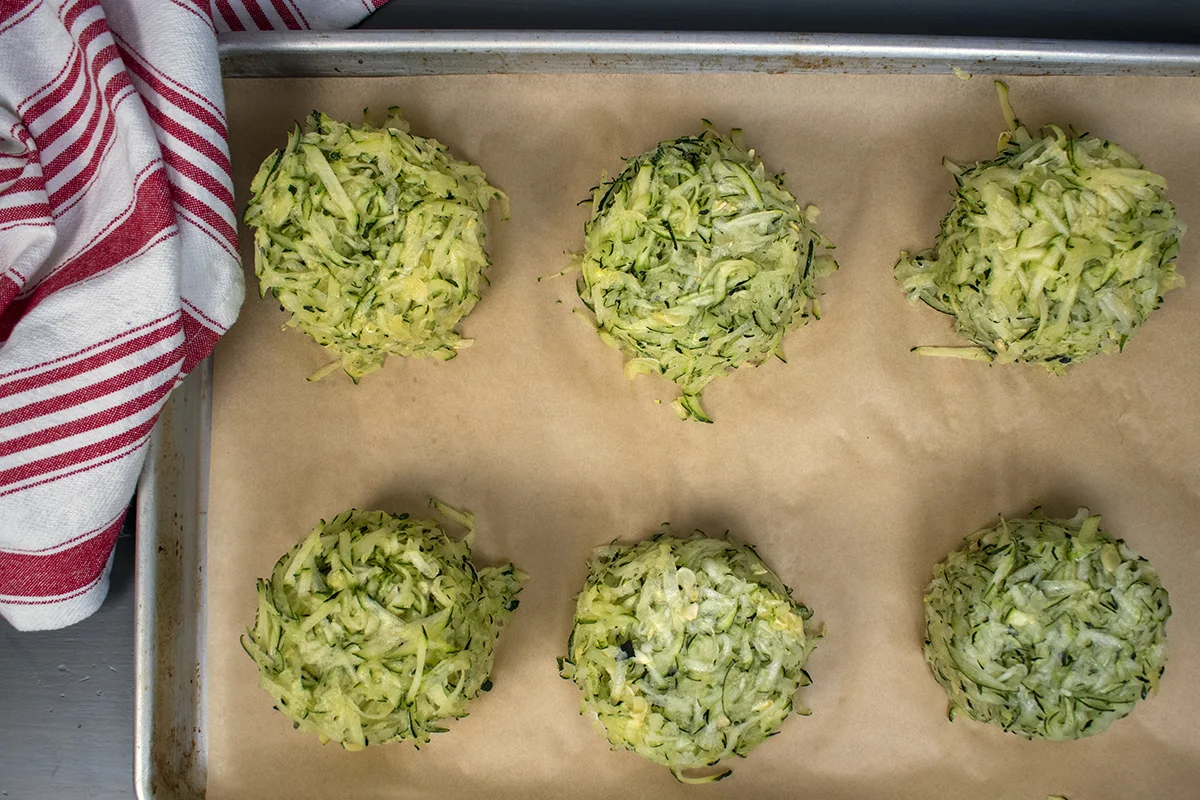
I’ve seen a few tutorials where the grated zucchini is frozen in individual freezer bags in one or two-cup portions. This seems like a lot of plastic waste to me, not to mention a lot of extra work sucking all the air out of each bag and sealing it up.
Nope, not in this kitchen. We’re easy, hence freezing the zucchini first in pre-measured portions.
Whenever you need zucchini, you can grab as many one-cup chunks as you need. And for things like pasta and stir-fries, you don’t need to thaw it first; just toss the frozen zucchini in while you’re cooking.
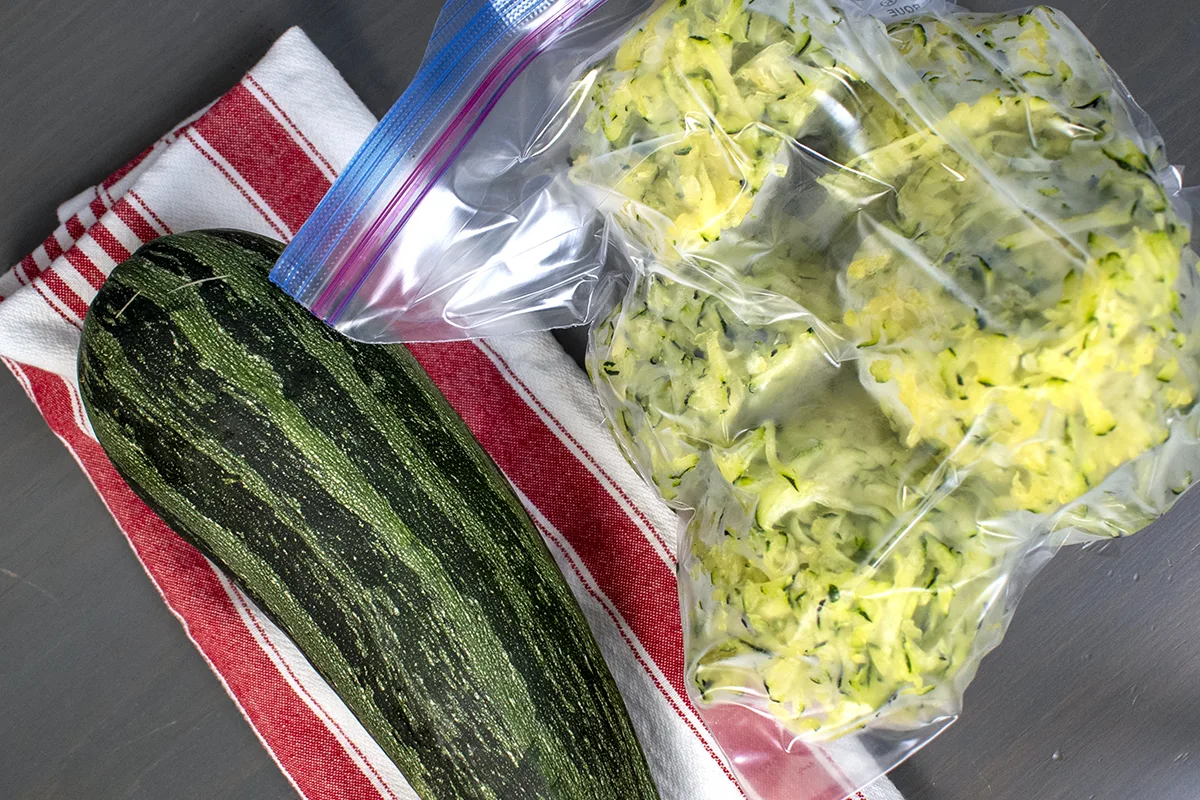
When preserving food, it’s always a good idea to use more than one method; that way, if your freezer dies or you lose a batch of zucchini relish to a bad seal, you don’t lose all of your harvest for the year. Check out Cheryl’s great piece for more ways to preserve zucchini.
Freezing zucchini this way makes it easy to enjoy your bounty all year long, without the time-consuming process of blanching it first.

Get the famous Rural Sprout newsletter delivered to your inbox.
Including Sunday ramblings from our editor, Tracey, as well as “What’s Up Wednesday” our roundup of what’s in season and new article updates and alerts.

